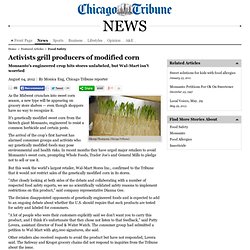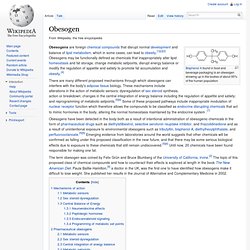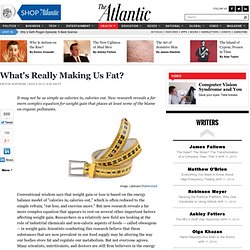

Spices & Herbs. Local Harvest / Farmers Markets / Family Farms / CSA / Organic Food. California Farmers' Markets Association. Washington State Farmers Market Association - supporting and promoting vibrant and sustainable farmers markets. Whole Foods Market: Natural and Organic Grocery. Mountain Lodge Farm — All Natural Meat: Get the Best All Natural Meat from Niman Ranch. Beecher's Handmade Cheese. Beef.org - The Beef Industry's Information Center (National Cattlemen's Beef Association) Nutrition.gov. The Food Timeline.
Home. Supplies. The Ready Store - Emergency Preparedness, Food Storage, MRE's, and Freeze Dried Food! Food Service - Cash&Carry - Cash and Carry. Foodservicedirect.com Restaurant Supplies. Nitro-pack. King Arthur Flour. Food Storage. Download video “Our Heavenly Father created this beautiful earth, with all its abundance, for our benefit and use.

Emergency Essentials - Be Prepared Emergency Preparedness Food Storage. National Center for Home Food Preservation. How Huge Food Corporations Will Make Upcoming Food Price Hikes Even Worse. Richardson reports: "The fate of the corn crop on Midwestern farms even has comedian Stephen Colbert worried.

Agricultural economist Bruce Babcock appeared on his show, warning him that the prices of meat, dairy and eggs will increase because 'American livestock are fed a corn-heavy diet.' As Colbert put it, 'It is one thing for global warming to make sea levels rise, but nobody told me it would make my cheese levels recede.'" By Jill Richardson, AlterNet 10 August 12 The entire American food system is built on one crop -- corn.
Armer George Naylor sounds a little too much like the fictional character Eeyore from Winnie the Pooh when I ask about his corn crop. The 2012 drought is now the worst drought our country has faced in half a century. Most of the time, Americans don't need to worry much about how the food gets to our table and whether the weather has anything to do with it. Where does all the corn go? Experts debate how much biofuels impact food prices, but a few trends are clear. Monsanto's new sweet corn adds to debate on genetically modified foods. August 04, 2012|By Monica Eng, Chicago Tribune reporter (George Thompson, Chicago Tribune) As the Midwest crunches into sweet corn season, a new type will be appearing on grocery store shelves — even though shoppers have no way to recognize it.

It's genetically modified sweet corn from the biotech giant Monsanto, engineered to resist a common herbicide and certain pests. The arrival of the crop's first harvest has alarmed consumer groups and activists who say genetically modified foods may pose environmental and health risks. Eatingwelllivingthin. November 1, 2010 by Linda So yummy!

If you want a change of pace that’s meat-free, yet full of protein, fiber, and very filling…this might be for you. I like it with Tzatziki on top (my recipe is in this post), or a little “fry sauce” (what some drive-ins call that wonderful mayo/ketchup combo), and with a thick slice of tomato, avocado, onion and lettuce, as a burger should be, it’s fab. Don’t be afraid of Quinoa. It cooks just like rice – might even be a little easier! UPDATE!! 2 rounded cups cooked quinoa (see note below for cooking instructions) 3/4 cup shredded cheddar cheese (or other variety, if you prefer) 1/2 cup low-fat cottage cheese. Obesogen.
Bisphenol A found in food and beverage packaging is an obesogen showing up in the bodies of about 95% of the human population There are many different proposed mechanisms through which obesogens can interfere with the body's adipose tissue biology.

These mechanisms include alterations in the action of metabolic sensors; dysregulation of sex steroid synthesis, action or breakdown; changes in the central integration of energy balance including the regulation of appetite and satiety; and reprogramming of metabolic setpoints.[5][6] Some of these proposed pathways include inappropriate modulation of nuclear receptor function which therefore allows the compounds to be classified as endocrine disrupting chemicals that act to mimic hormones in the body, altering the normal homeostasis maintained by the endocrine system .[7] Mechanisms of action[edit] [edit] Sex steroid dysregulation[edit] Sex steroids normally play a significant role in lipid balance in the body.
Growing fatter on a GM diet. As part of the study, a group of rats were fed corn which had been genetically modified for pest resistance.

(Photo: iStockphoto) Since genetically modified (GM) food started to appear in shops in the early nineties, large quantities have been sold for human consumption – without any harmful effects, as far as we know. But is there a risk of a long-term impact? An international research project is exploring the effects of GM food, studying the impact on rats, mice, pig and salmon. The wide-ranging study includes researchers from Hungary, Austria, Ireland, Turkey, Australia and Norway. What's Really Making Us Fat? - Kristin Wartman - Health.
It may not be as simple as calories in, calories out.

New research reveals a far more complex equation for weight gain that places at least some of the blame on organic pollutants. Image: Laborant/Shutterstock Conventional wisdom says that weight gain or loss is based on the energy balance model of "calories in, calories out," which is often reduced to the simple refrain, "eat less, and exercise more. " But new research reveals a far more complex equation that appears to rest on several other important factors affecting weight gain. Researchers in a relatively new field are looking at the role of industrial chemicals and non-caloric aspects of foods -- called obesogens -- in weight gain. The CDC reports that "nearly all" Americans tested have BPA in their urine, "which indicates widespread exposure to BPA in the U.S. population. " The participants in the AJCN study were given low, normal, and high amounts of protein and 1,000 more calories than needed.